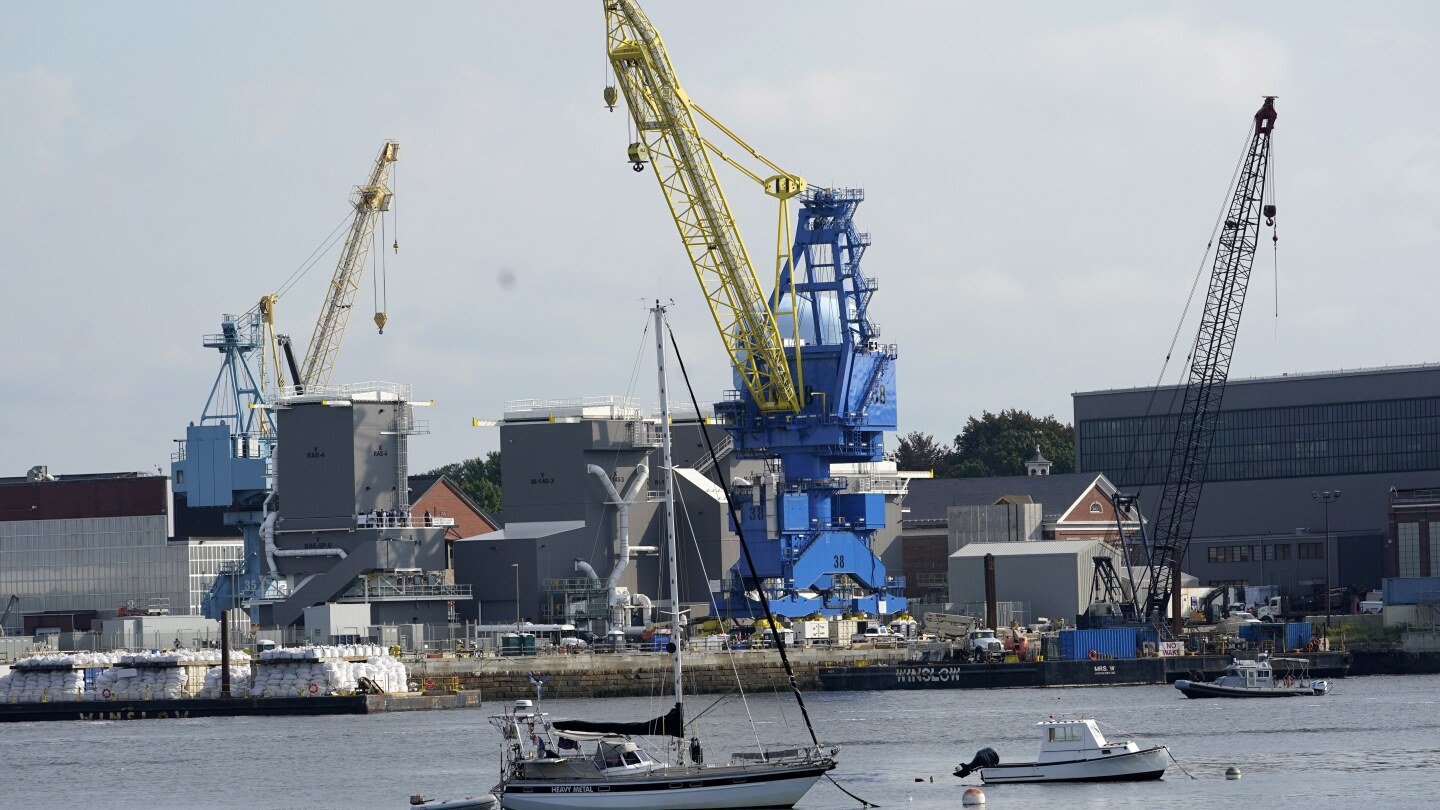WASHINGTON (AP) — American lawmakers are using a trip to South Korea and Japan to explore how the United States can tap those allies’ shipbuilding expertise and capacity to help boost its own capabilities, which are dwarfed by those of China.
Sens. Tammy Duckworth, D-Ill., and Andy Kim, D-N.J., who are scheduled to land in Seoul on Sunday before traveling to Japan, plan to meet top shipbuilders from the world’s second- and third-largest shipbuilding countries. The senators want to examine the possibilities of forming joint ventures to construct and repair noncombatant vessels for the U.S. Navy in the Indo-Pacific and bring investments to American shipyards.
“We already have fewer capacity now than we did during Operation Iraqi Freedom” in 2003, Duckworth told The Associated Press. “We have to rebuild the capacity. At the same time, what capacity we have is aging and breaking down and taking longer and more expensive to fix.”
Their trip comes as President Donald Trump demands a plan to revive U.S. shipyards and engage foreign partners. The Pentagon is seeking $47 billion for shipbuilding in its annual budget. The urgency stems from the fact that Washington severely lags behind China in building naval ships, a situation raising alarms among policymakers who worry the maritime balance of power could shift to China, now the world’s No. 1 shipbuilder.
Duckworth, who serves on the Senate Armed Services Committee, said she hopes the trip could lead to joint ventures among the U.S. military, American companies and foreign partners to build auxiliary vessels for the Navy and small boats for the Army.
Another possibility is repairing U.S. ships in the Indo-Pacific region.
“If we have to bring ships all the way back to the United States … to wait two years to be fixed, that doesn’t help the situation,” Duckworth said.
The discussions, she said, will focus on auxiliary vessels, which are noncombatant ships such as fueling and cargo vessels that support naval and military operations. The Navy’s auxiliary fleet is aging and insufficient in numbers, she said.
The U.S. commercial shipbuilding accounted for 0.1% of global capacity in 2024, while China produced 53%, followed by South Korea and Japan, according to a report by the Center for Strategic and International Studies. A Navy review from April 2024 found that many of its major shipbuilding programs were one year to three years behind schedule.
During the trip, the senators are expected to meet representatives from major shipbuilders in the region.
South Korea and the U.S. are already making progress on shipbuilding cooperation. In March, Hanwha Ocean completed maintenance work for a 41,000-ton U.S. Navy dry cargo and ammunition ship in South Korea. The overhaul of USNS Wally Schirra was the Korean company’s first project after it secured a repair agreement with the U.S. Navy in July 2024.
Hanwha Group last year acquired Philly Shipyard in Philadelphia, which builds large merchant mariners, part of the reserve auxiliary fleet.
Earlier this month, South Korea proposed to invest $150 billion in the U.S. shipbuilding industry to support Trump’s “Make American Shipbuilding Great Again” initiative as part of its tariffs talk with the White House.
Duckworth said she had earlier conversations with Hyundai Heavy Industries “about them actually buying into U.S. shipyards on U.S. soil”.
This month, China formed the world’s biggest shipbuilding company by merging two state-owned shipbuilders. The combined entity China State Shipbuilding Corporation produces Chinese navy’s combat vessels from aircraft carriers to nuclear submarines. It commands 21.5% of global shipbuilding market.

